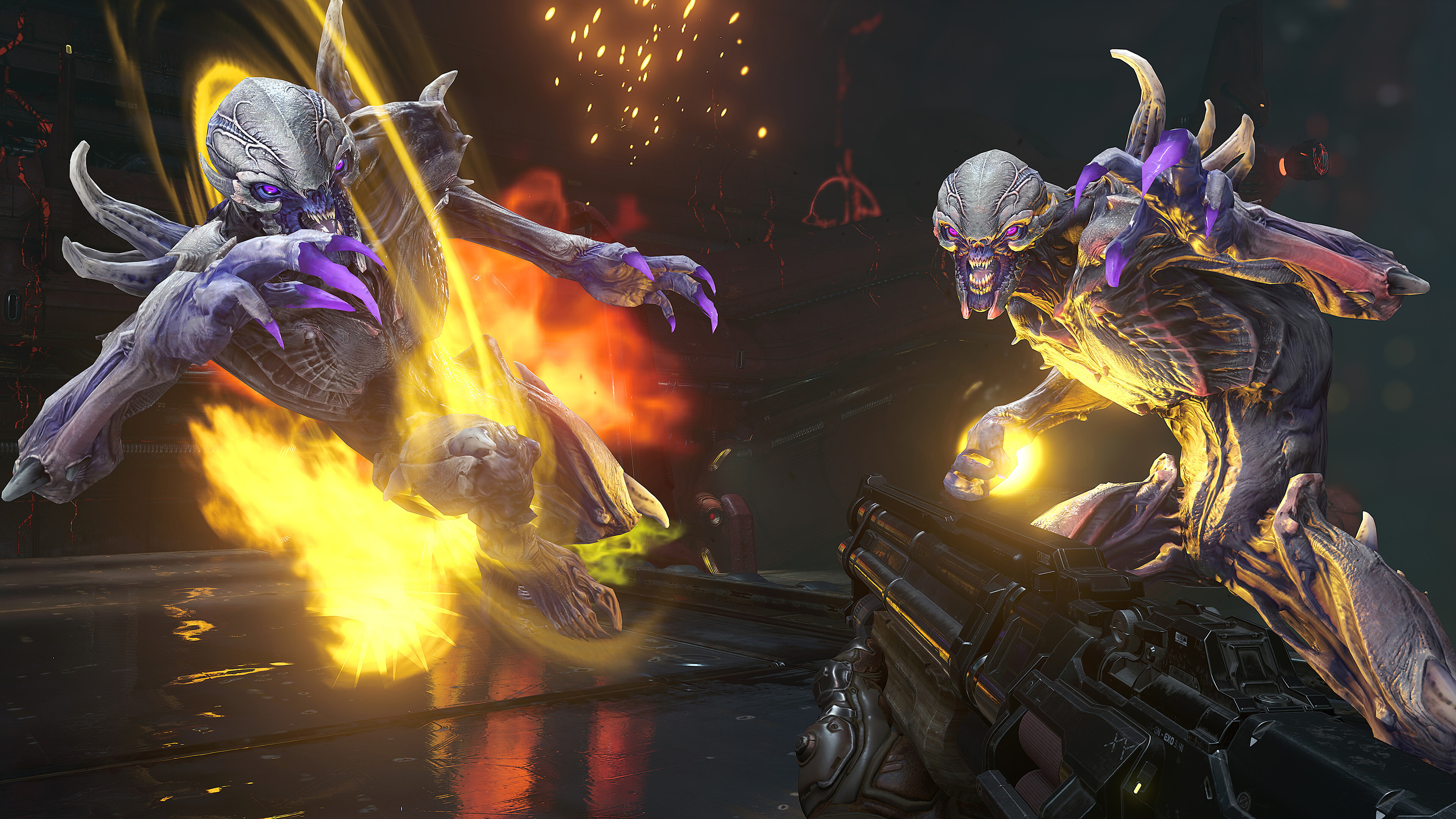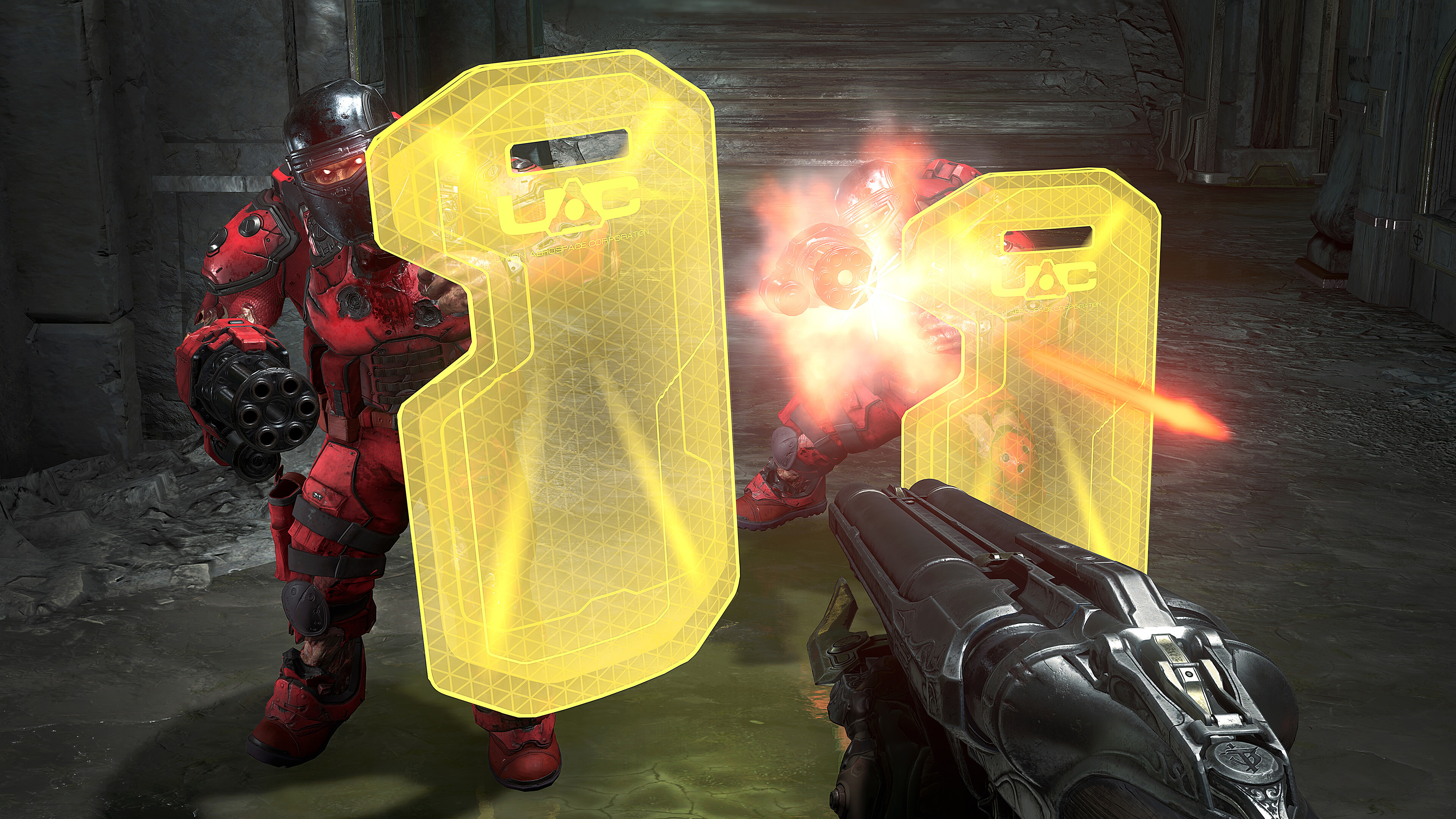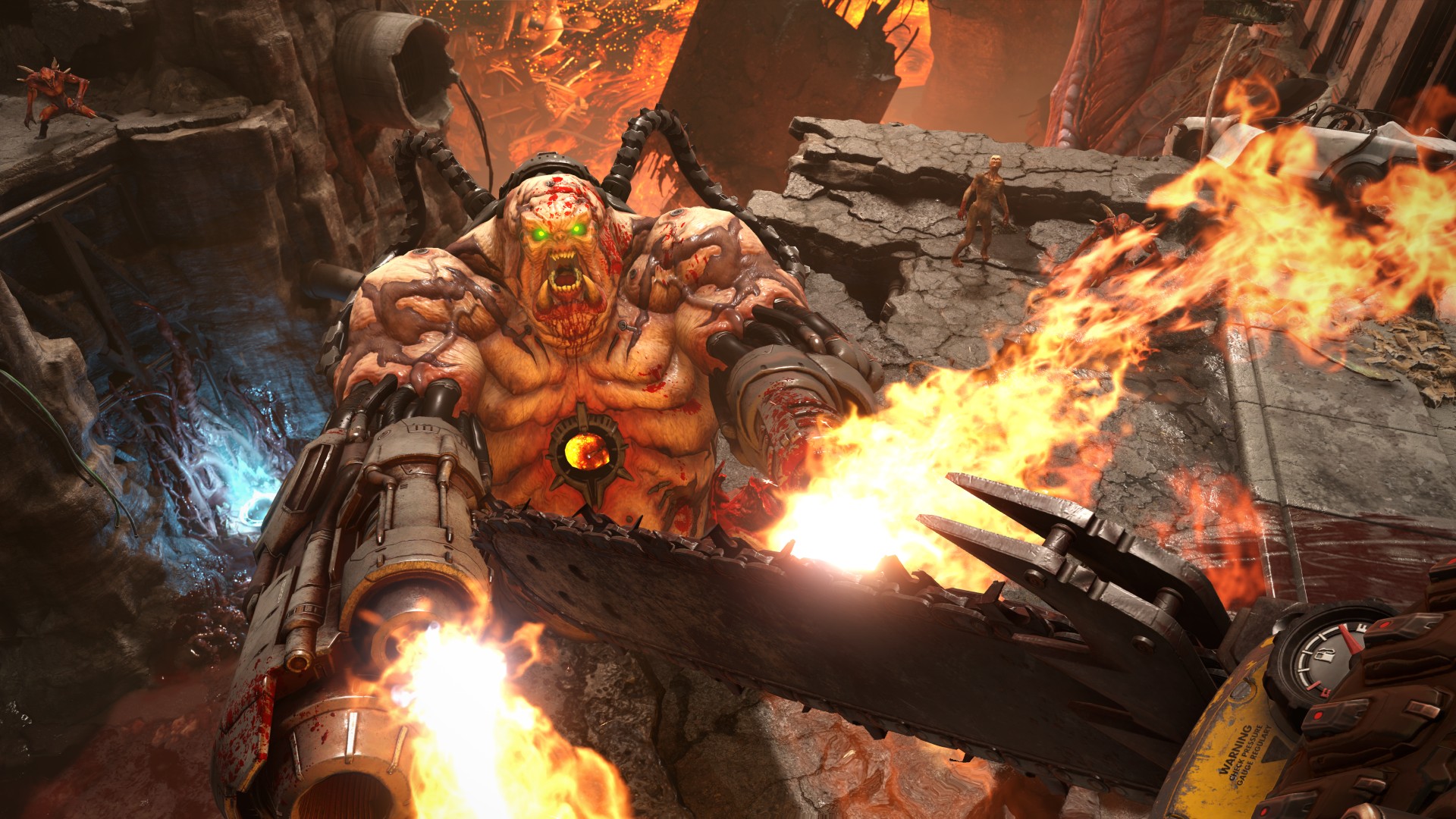Doom Eternal might be divisive, but exemplifies some of Doom’s oldest values
Wicked waltz

It’s a dangerous gambit, to call your game Doom Eternal. Like Halo Infinite and Duke Nukem Forever, it’s a title that evokes a long history and a prosperous future. And as most game developers will tell you – particularly those who labored for almost a decade and a half over the Duke’s doomed return – it’s deeply unwise to make predictions about what’s coming.
To id Software, fate has dealt only a glancing blow as punishment for its pride. On the one hand, Doom Eternal and its DLC are critically acclaimed, not least by me personally: I awarded the sequel a rare 9 in Edge magazine, and called The Ancient Gods - Part One “a series of victory laps” in PC Gamer. Yet among players, Eternal has proved more divisive than any other game in the series.
Some were turned off by the platforming sequences that broke up battles, or the self-consciously corny storytelling that positioned the Slayer amid angels in a battle for heaven’s survival. But most of all, Eternal upset players with its uncompromising commitment to arena combat as a strategic puzzle. A revolving death-waltz in which there was a ‘right’ and ‘wrong’ way to tackle any given situation – where you must use a particular weapon meant to counter a specific enemy, as if they were opposites on the color wheel.
The Doom reboot of 2016 invented this dance, but was happy to let you disengage with it to a degree. Players who don’t want to learn the steps can, on the default difficulty, just about cruise through the campaign with both hands glued to the super shotgun. But that policy ended with Eternal, which punished incorrect play with a swift death. It demanded you fight on its terms, and keep your brain engaged during engagements that only got longer and more challenging as its campaigns wore on.
The Ancient Gods introduced ogling turrets, best handled with a double tap straight to the eye from the scoped assault rifle; and the spirit, which must be seared with the plasma rifle’s microwave beam, lest it hop into another host and supercharge its demonic body. There’s no room for creative problem-solving in this equation; the solutions are already decided. It remains only for you to decide in which order to pull them off.
I’m sympathetic to those who don’t get on with this strange and inspired formula; who don’t sign up for a strategy game played at 5x speed. Like any creative vision pursued to its most extreme and undiluted endpoint, Eternal lost some of its potential audience along the way. But I draw the line at any implication that id Software has betrayed the soul of Doom, or on some level forgotten what the series should be about. After returning to the 1993 original on Nintendo Switch, I’m more certain than ever that Eternal’s interpretation is a legitimate one, with deep roots. Deep as hell.
Chain killer

Doom was always a game about matching the right weapon to the right opponent. In its early stages, the selection is simple: pistol or shotgun. The pistol can be used to plink away from a distance, while the latter brings enemies down faster, and so is best saved for close engagements where you’re liable to take more damage.
Get daily insight, inspiration and deals in your inbox
Sign up for breaking news, reviews, opinion, top tech deals, and more.
Then there’s the chainsaw: let rip into the chest of a pinkie and the blade will hold them in place until death, preventing the boar-like beasts from tearing at your flanks. Call it Doom’s first ever glory kill.
The choice quickly becomes more complicated, however, since your collected arsenal carries over to the next level – a neat incentive for playing through episodes in order. As your weapon selection grows, so does the assemblage of animated gargoyles sent to stop you. And over time, with experience, you begin to pair them off. To each gurgling monster, a gun in their gob.
The trusty shotgun is meant for imp disposal – hit those Hall-of-the-Mountain-King-ass devils square in the chest and they’ll go down in one hit. The one-eyed, looming cacodemon, meanwhile, deserves the chaingun – a reliable rat-at-at providing a string of interrupts that prevent the bobbing orb from letting loose its fireballs.
Picked up the screaming, alien plasma rifle? You’ll want to reserve it for spilling the green blood of the bovine Barons of Hell, a formidable gun for a meaty menace. Then there’s the chainsaw: let rip into the chest of a pinkie and the blade will hold them in place until death, preventing the boar-like beasts from tearing at your flanks. Call it Doom’s first ever glory kill.
On higher difficulties and in later levels, these smart choices are enforced by ammo scarcity. Use up a powerful tool on an undeserving target, and you may well pay for your inefficiency with your life. Then again, ammo is of no benefit to a dead marine, and if you don’t fire your BFG in a fix – as if sending up a deadly flare – you’ll lose it forever, starting the level over with an empty weapon belt. It’s true what they say: you miss 100% of the Big F***ng shots you don’t take.
Scarce to death

Choosing what to fire and when has long been Doom’s metagame, then, and Eternal embraces that history wholesale. It uses not just ammo but health scarcity to push you into making daring decisions – leaving you on the front foot as you set enemies aflame and chop them up with the chainsaw in pursuit of armor, bullets, and ultimately survival. As in the original Doom, you can’t afford to be too careful. But as id Software teaches, bold doesn’t mean stupid.
It’s something of a story spoiler for Doom Eternal, but I’d be remiss not to mention one of its twists: that the denizens of heaven, desperate for energy to keep their dimension alive, have struck a deal with hell’s minions for a share of the juice produced by sacrificed souls. In the end, every action in Doom is prompted by a shortage of resources.
All of which is to say that Doom Eternal’s take on the series is valid, rather than definitive. Looked at from the angle of Doom 3’s designers, the 1993 original is a horror game, defined by monster closets and jump scares; the experience of being trapped, ambushed, or plunged into darkness. It turns out that Doom is an idea characterful enough to support a multitude of approaches, each accentuating different parts of the primordial FPS to bring about new and distinct results. If Doom Eternal isn’t for you, then, perhaps your dream interpretation is just around the corner – like a zombieman readying their rifle for Doomguy’s arrival. Roll on the next reboot.

Jeremy is TRG's features editor. He has a decade’s experience across publications like GamesRadar, PC Gamer and Edge, and has been nominated for two games media awards. Jeremy was once told off by the director of Dishonored 2 for not having played Dishonored 2, an error he has since corrected.